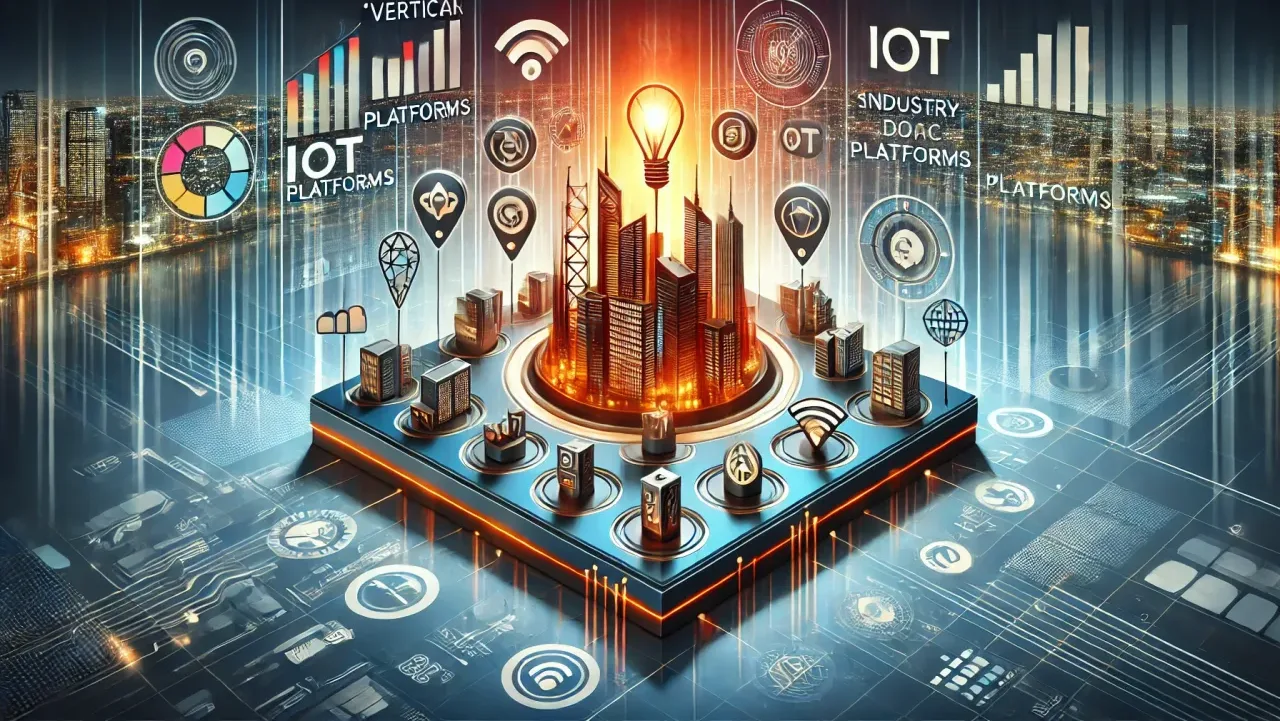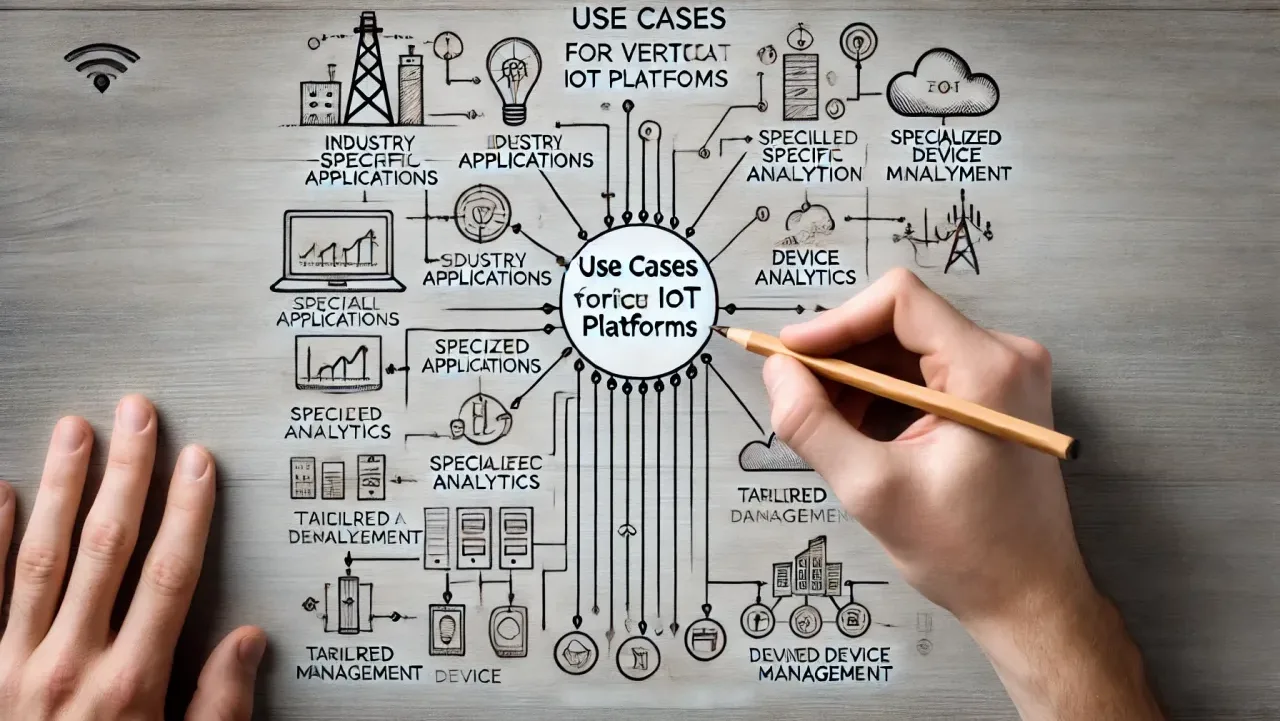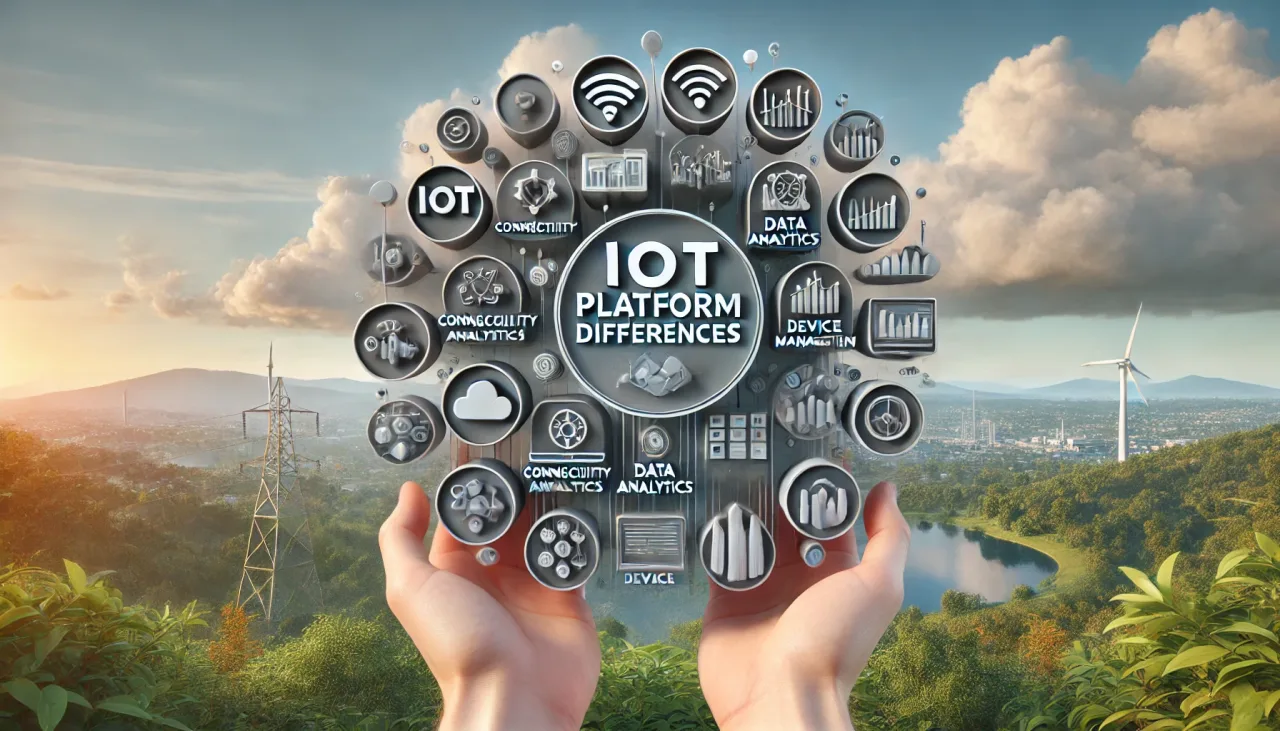In this Article
Understand the IoT Platform Differences
The Internet of Things (IoT) landscape is vast and diverse, with various platforms designed to cater to different needs and industries. Among the many types of IoT platforms, Horizontal IoT Platforms and Vertical IoT Platforms stand out due to their distinct architectures and applications. This detailed article explores the features, benefits, and use cases of Horizontal IoT Platforms. By grasping the IoT Platform Differences, businesses can better align their IoT strategies with their specific needs. Additionally, recognizing these differences aids in selecting the most suitable platform to enhance operational efficiency and drive innovation. Furthermore, an in-depth understanding of these platforms can help in anticipating future trends and technological advancements. This knowledge empowers companies to stay ahead in the competitive IoT market and ensure long-term success. Finally, the right choice of IoT platform can lead to significant cost savings and improved scalability.
What are IoT Platforms?
An IoT platform is a comprehensive suite of technologies that enable the provisioning, management, and automation of connected devices within the IoT ecosystem. These platforms provide the necessary tools and infrastructure to connect, manage, and analyze data from IoT devices, facilitating seamless communication and data flow.
What are Horizontal IoT Platforms?
Horizontal IoT Platforms are designed to be versatile and adaptable across multiple industries and applications. These platforms provide a broad set of functionalities that can be customized to fit various use cases.
Key Features of Horizontal IoT Platforms
Horizontal IoT Platforms come with several core features that make them flexible and widely applicable:
- Scalability: These platforms are built to handle a large number of devices and vast amounts of data, making them ideal for expansive IoT networks.
- Interoperability: Horizontal IoT Platforms support multiple communication protocols and standards, ensuring seamless integration with various devices and systems.
- Customization: They offer extensive customization options, allowing businesses to tailor the platform to their specific needs.
- Robust Security: These platforms include advanced security features to protect data and devices from cyber threats.
What are Vertical IoT Platforms?

Ai image by Dall-E
Vertical IoT Platforms, on the other hand, are designed for specific industries or applications. These platforms provide tailored solutions that address the unique requirements and challenges of particular sectors.
Key Features of Vertical IoT Platforms
Vertical IoT Platforms are characterized by their specialized functionalities and industry focus:
- Industry-Specific Solutions:
These platforms offer features and tools specifically designed to meet the needs of particular industries, such as healthcare, manufacturing, or agriculture. Businesses can leverage these specialized solutions to gain a competitive edge. Additionally, industry-specific platforms facilitate seamless integration with existing systems. - Pre-Configured Applications: Vertical IoT Platforms come with pre-configured applications that streamline deployment and reduce the need for extensive customization. This approach minimizes the time and resources needed for setup. Furthermore, pre-configured solutions help ensure a smoother transition to IoT technologies.
- Enhanced Efficiency: By focusing on specific use cases, these platforms optimize performance and efficiency for the targeted applications. This targeted optimization leads to faster response times and improved overall productivity. Enhanced efficiency translates into cost savings and better resource utilization.
Differences Between Horizontal and Vertical IoT Platforms
Understanding the differences between Horizontal and Vertical IoT Platforms is crucial for selecting the right solution for your business. Horizontal IoT platforms provide broad applicability across multiple industries, offering versatility and scalability. In contrast, Vertical IoT platforms deliver specialized functionalities tailored to specific industries, ensuring compliance with industry regulations.
Scope and Flexibility
- Horizontal IoT Platforms: These platforms are designed for broad applicability, making them suitable for a wide range of industries and use cases. Their flexibility allows businesses to adapt the platform to various applications.
- Vertical IoT Platforms: These platforms are tailored for specific industries, offering specialized features that address unique challenges. While they provide targeted solutions, they may lack the flexibility of Horizontal IoT Platforms.
Customization and Scalability
- Horizontal IoT Platforms: These platforms offer extensive customization options and are highly scalable, capable of supporting large IoT networks with numerous devices and data points.
- Vertical IoT Platforms: While they may offer some degree of customization, Vertical IoT Platforms are generally pre-configured for specific applications, which can limit scalability in broader contexts.
Deployment and Integration
- Horizontal IoT Platforms: These platforms are designed to integrate with a variety of devices and systems, supporting multiple communication protocols and standards. This interoperability facilitates seamless deployment across different environments.
- Vertical IoT Platforms: Integration with Vertical IoT Platforms is often more straightforward within the targeted industry, but they may face challenges when integrating with systems outside their specific focus.
Use Cases for Horizontal IoT Platforms
Horizontal IoT Platforms are versatile and can be applied across various industries. Here are some key use cases:
Smart Cities
Smart cities leverage Horizontal IoT Platforms to manage and optimize urban infrastructure, enhancing the quality of life for residents.
- Improved Public Services: IoT platforms enable real-time monitoring and management of public services such as waste management, water supply, and transportation.
- Energy Efficiency: Smart grids and energy management systems use IoT platforms to optimize energy distribution and reduce consumption.
- Enhanced Safety: IoT-enabled surveillance and emergency response systems improve public safety and security.
Industrial IoT
Horizontal IoT Platforms play a crucial role in industrial automation and process optimization.
- Predictive Maintenance: IoT platforms monitor equipment health and predict failures, reducing downtime and maintenance costs.
- Process Automation: Automated control systems optimize manufacturing processes, improving efficiency and productivity.
- Supply Chain Management: IoT platforms provide real-time visibility into supply chain operations, enhancing logistics and inventory management.
Healthcare
In healthcare, Horizontal IoT Platforms facilitate the integration of various medical devices and systems, improving patient care and operational efficiency.
- Remote Patient Monitoring: IoT platforms enable continuous monitoring of patient health, allowing for timely interventions and improved outcomes.
- Medical Device Integration: These platforms integrate with various medical devices, facilitating seamless data collection and analysis.
- Telemedicine: IoT-enabled telemedicine platforms connect patients with healthcare providers, enhancing access to care.
Retail
Retail businesses use Horizontal IoT Platforms to enhance customer experiences and optimize operations.
- Improved Customer Experience: Personalized marketing and real-time inventory management enhance customer satisfaction.
- Operational Efficiency: Automation and real-time data collection streamline retail operations, reducing costs and improving efficiency.
- Enhanced Inventory Management: Smart shelves and supply chain tracking optimize inventory levels and reduce losses.
Use Cases for Vertical IoT Platforms

Ai Image by Dall-E
Vertical IoT Platforms are designed for specific industries, offering tailored solutions that address unique challenges. Here are some key use cases:
Manufacturing
Vertical IoT Platforms in manufacturing provide advanced solutions for optimizing production processes and improving product quality.
- Predictive Maintenance: IoT platforms monitor equipment health and predict failures, reducing downtime and maintenance costs.
- Quality Control: Real-time monitoring of production processes ensures high-quality standards and reduces defects.
- Process Optimization: IoT data analytics help optimize manufacturing processes, improving efficiency and productivity.
Agriculture
In agriculture, Vertical IoT Platforms optimize farming operations and improve productivity.
- Precision Farming: IoT platforms monitor soil conditions, weather, and crop health, enabling precise resource allocation and improved yields.
- Livestock Management: IoT devices track the health and location of livestock, improving animal welfare and farm management.
- Automated Irrigation: IoT platforms automate irrigation systems, ensuring optimal water use and reducing waste.
Energy Management
Vertical IoT Platforms in energy management provide solutions for optimizing energy consumption and improving sustainability.
- Smart Grids: IoT platforms monitor and manage energy distribution, improving efficiency and reliability.
- Energy Consumption Monitoring: Real-time monitoring of energy use helps identify inefficiencies and reduce consumption.
- Renewable Energy Integration: IoT platforms facilitate the integration of renewable energy sources into the grid, enhancing sustainability.
Transportation
Vertical IoT Platforms in transportation enhance safety, efficiency, and sustainability.
- Fleet Management: IoT platforms monitor vehicle health, optimize routes, and reduce maintenance costs.
- Traffic Management: Real-time monitoring of traffic conditions improves flow and reduces congestion.
- Public Transportation: IoT-enabled systems enhance the efficiency and reliability of public transportation services.
Conclusion
Choosing the right IoT platform is essential for optimizing IoT deployments and achieving business objectives. Horizontal IoT platforms offer versatility and scalability, making them suitable for a wide range of industries and applications. Vertical IoT platforms provide specialized solutions tailored to specific industries, enhancing efficiency and compliance. By understanding the key differences between these platform types, businesses can make informed decisions that drive innovation and operational efficiency.
Additionally, horizontal platforms are ideal for companies looking to implement broad, cross-functional IoT solutions, while vertical platforms excel in niche markets with specific regulatory and operational requirements. Businesses must also consider the integration capabilities and support services each platform offers. By carefully evaluating these aspects, companies can choose an IoT platform that not only meets their current needs but also supports future growth and technological advancements.
How We Can Help
At Minnovation, we specialize in providing comprehensive IoT solutions tailored to meet the unique needs of your business. Our expertise in both Horizontal and Vertical IoT Platforms ensures seamless integration, robust security, and enhanced performance. We offer consultation, development, and management services to help you harness the full potential of IoT technology. Whether you are looking to implement a new IoT system or optimize your existing infrastructure, our team is here to support you every step of the way. For more details please visit our website or Contact us.
Reference
Related Blog Posts
How Smart Cities Connect: Getting Started with Edge AI and IoT Technology
How to Get Started with Edge AI and IoT Technologies in Smart Cities: Overcoming Integration Challenges In recent years, the concept of smart cities has evolved from a futuristic Read More
5 Step Strategy: Ensuring Security and Privacy in 15-Minute Smart Cities
Introduction Ensuring security and privacy in 15-minute smart cities is a critical challenge as urban areas become increasingly connected through IoT and edge AI technologies. These cities aim to Read More
What is a smart city and the challenge of legacy systems
How to Get Started with Integrating Legacy Systems in Smart Cities Smart cities are transforming urban landscapes by leveraging technology to improve the quality of life for residents. However, Read More




